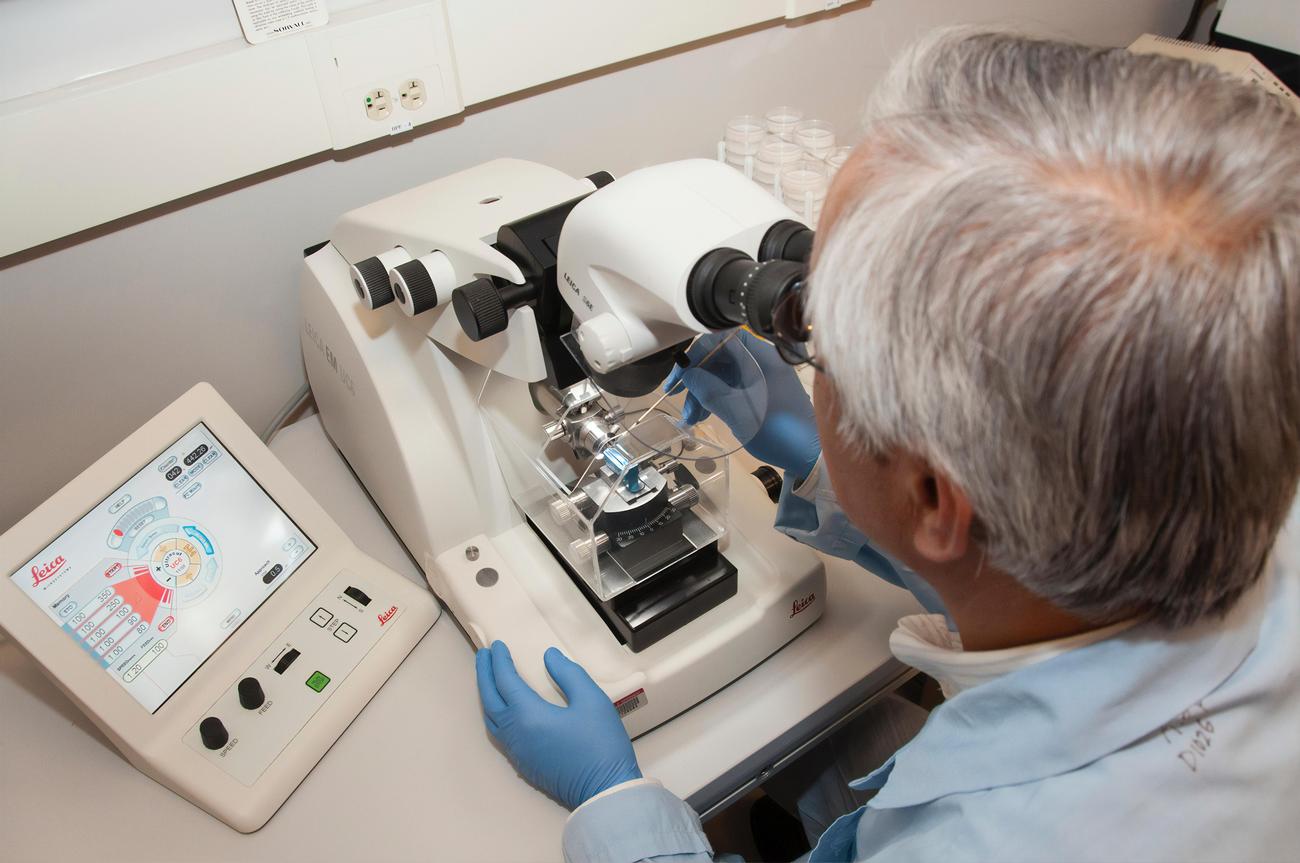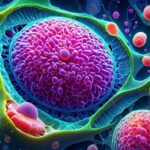Get ready to embark on a journey into the mesmerizing world of translation biology as we unveil some fascinating facts that will leave you in awe. In this article, titled “Fascinating Facts: Unveiling the Wonders of Translation Biology,” we will delve deep into the intricate mechanisms of translation biology, shedding light on its captivating processes and unraveling the mysteries that lie beneath. From decoding the genetic information in our cells to the synthesis of proteins, prepare to be amazed by the incredible world of translation biology. So, buckle up and join us as we explore these enthralling facts about the wonders of translation biology.

Fascinating Facts: Unveiling the Wonders of Translation Biology
Translation Biology: Breaking Down the Intricacies
Translation biology is an elegant process that lies at the heart of protein synthesis. It takes place within the intricate machinery of living cells, where proteins are produced using RNA molecules as templates. But what exactly happens during translation, and why is it so crucial to our understanding of life itself? Let’s delve into some captivating facts about translation biology.
1. The Blueprint of Protein Assembly: Messenger RNA (mRNA)
At the heart of translation biology is messenger RNA (mRNA). This molecule carries the genetic instructions from the DNA within the nucleus to the ribosomes in the cytoplasm. The sequence of nucleotides in mRNA determines the sequence of amino acids in the protein being synthesized. It’s like a blueprint that guides the ribosomes in building the protein structures.
2. Reading the Blueprint: Ribosomes as Protein Factories
The ribosomes, often referred to as the protein factories of the cell, play a crucial role in translation biology. These complex structures, composed of proteins and ribosomal RNA (rRNA), read the mRNA blueprint and assemble the amino acids in the correct order to form a protein chain. They ensure that the correct amino acid is added at each step, ultimately determining the protein’s structure and function.
3. Folding Amino Acids: The Art of Protein Formation
Once the protein chain is synthesized, it undergoes a process known as protein folding. This process involves the amino acid chain bending and twisting in specific ways to adopt its functional shape. The precise folding of proteins is critical to their proper function. Imagine a beautifully intricate origami sculpture, where each fold holds the key to its final form and unique purpose within the cell.
4. A Symphony of Cellular Processes: Translation and Transcription
Translation is closely linked to another essential process called transcription. Transcription is the first step in gene expression, where the DNA sequence is transcribed into mRNA. Once the mRNA is synthesized, it leaves the nucleus and enters the cytoplasm, where it then undergoes translation on the ribosomes. These interconnected processes work hand in hand, allowing the flow of information from the genetic code within DNA to the functional proteins that carry out cellular tasks.
5. From Prokaryotes to Eukaryotes: The Tale of Two Translations
Translation is a fascinating biological phenomenon that is not limited to any particular organism. Both prokaryotes and eukaryotes perform translation, albeit with some differences. Prokaryotic translation, found in bacteria, is a streamlined process that occurs concurrently with transcription. In contrast, eukaryotic translation, found in complex organisms like humans, undergoes distinct steps, including mRNA processing and transport, before reaching the ribosomes.
6. Regulating the Translation Orchestra: Initiation Factors Take the Stage
Just like any well-orchestrated performance, translation requires careful regulation. Initiation factors, such as IF1, IF2, and IF3, act as the conductors in this intricate symphony. They ensure that translation starts at the right time and with the correct mRNA, preventing errors and maintaining the accuracy of protein synthesis. Without the precise coordination of these initiation factors, the translation process could go awry, leading to dysfunction or even disease.
7. The Tightrope Walk: Balancing Accuracy and Efficiency
One of the challenges of translation biology is striking a delicate balance between accuracy and efficiency. While it is crucial to synthesize proteins quickly to meet cellular demands, any errors in translation can have severe consequences. To ensure accuracy, the ribosomes employ proofreading mechanisms that double-check each step of protein synthesis. These fidelity checks help prevent errors and maintain the integrity of the final protein product.
8. Applications Beyond the Basics: Peeking Into the Cellular World
Translation biology has far-reaching implications in various branches of biological research. It helps scientists study gene expression and the regulation of protein synthesis, providing insights into fundamental cellular processes. Additionally, understanding translation mechanisms is instrumental in fields like pharmacology, where researchers aim to develop medications targeting specific proteins. Translation biology opens a window into the intricate workings of cells, offering us a deeper comprehension of life’s complexities.
In the world of translation biology, facts unfold like an intriguing narrative, weaving together the nuances of protein synthesis within living cells. From mRNA blueprints to the orchestration of initiation factors, every aspect reveals a captivating story of cellular life. It is through the lens of translation biology that we begin to decipher the wonders that shape our understanding of existence.
Key Takeaways:
– Translation biology involves the synthesis of proteins using RNA as a template.
– Messenger RNA (mRNA) carries the genetic instructions for protein synthesis.
– Ribosomes read the mRNA blueprint and assemble amino acids to form proteins.
– Protein folding is crucial for maintaining functional protein structures.
– Translation is closely linked to transcription, the process of DNA to mRNA synthesis.
– Prokaryotic and eukaryotic organisms perform translation with some variations.
– Initiation factors regulate the translation process, ensuring accuracy and efficiency.
– Translation balances accuracy and speed to prevent errors in protein synthesis.
– Translation biology has wide-ranging applications in studying gene expression and understanding cellular processes.
Translation is an art form that bridges language barriers and unlocks a world of understanding. Are you curious about the fascinating facts that surround this intricate process? If so, click here to uncover some mind-blowing facts about translation.
How Proteins are Made: Transcription and Translation Explained
[youtube v=”ubdoUqmNF98″]
Introduction
Proteins play a vital role in the functioning of living organisms. Have you ever wondered how proteins are made? In this article, we will delve into the fascinating process of protein synthesis, specifically focusing on transcription and translation. Understanding these steps is crucial in comprehending how the genetic code is translated into functional proteins.
Transcription: Copying the Genetic Instructions
The first step in protein synthesis is transcription. Transcription involves the creation of messenger RNA (mRNA) from a single gene of DNA. Genes are small sections of DNA that contain specific sequences of bases, which encode a particular sequence of amino acids. However, DNA, located within the nucleus of a cell, is too large to leave the nucleus itself. Therefore, to make a protein, a copy of the gene is made in the form of mRNA. This mRNA copy carries the genetic instructions from the DNA to the ribosomes, the protein-building factories of the cell.
“Transcription is the process of taking a single gene of DNA and copying it into a structure called mRNA.”
Transcription Process: Unraveling the DNA Code
To understand how mRNA is formed, let’s dive deeper into the transcription process. DNA is made up of two strands that are coiled together, forming a double helix. Before transcription can occur, an enzyme called RNA polymerase binds to the DNA just before the gene that needs to be copied. The two strands of DNA then separate, exposing their bases.
The RNA polymerase moves along the DNA strand, reading the bases one by one, and uses them to synthesize the mRNA strand. It is crucial to note that the bases of mRNA are complementary to the DNA bases, with one exception. Adenine (A) in DNA pairs with uracil (U) in mRNA, replacing thymine (T). Once the RNA polymerase has moved along the entire gene, the mRNA strand is complete, and the RNA polymerase detaches from the DNA.
“Transcription involves the enzyme RNA polymerase separating the DNA strands, reading the bases, and synthesizing the mRNA strand.”
Translation: Building Proteins from mRNA
The next step in protein synthesis is translation. mRNA, carrying the genetic instructions, exits the nucleus and heads to the ribosomes. Here, the ribosomes read the blueprint provided by the mRNA and assemble amino acids to form proteins. Each group of three bases on the mRNA, called a triplet or codon, codes for a specific amino acid.
To start the translation process, the mRNA strand and the ribosome bind together. Transfer RNA (tRNA) molecules, which carry amino acids, identify and bind to their complementary codons on the mRNA, ensuring the correct amino acid is brought to the ribosome. The ribosome joins the amino acids together, building a chain of amino acids, which is the protein.
“Translation is the process of assembling amino acids, brought by tRNA molecules, based on the genetic instructions carried by mRNA.”
The Significance of Protein Folding
Once the ribosome reaches the end of the mRNA sequence and completes the protein chain, the amino acid chain detaches from the ribosome. The protein then folds upon itself to form its unique three-dimensional structure. Protein folding is crucial for its functionality, allowing it to carry out specific tasks within the cell.
Conclusion
Understanding the process of protein synthesis is essential in comprehending the fundamental workings of living organisms. Transcription and translation provide the necessary steps to convert the genetic code into functional proteins. By unraveling the secrets of protein synthesis, scientists can gain insights into gene expression, molecular biology, and cellular processes.

FAQ
How does translation occur in living cells?
Translation occurs in living cells when proteins are produced using RNA molecules as templates. The process involves reading and translating messenger RNA (mRNA) molecules on ribosomes. The mRNA contains a sequence of nucleotides that determines the sequence of amino acids in the protein.
What is the role of ribosomes in translation?
Ribosomes play a crucial role in translation. They are the molecular machines responsible for reading the mRNA and translating it into a protein. Ribosomes consist of two subunits, the small subunit and the large subunit, which work together to catalyze the synthesis of proteins.
What are the different types of translation?
There are two main types of translation: prokaryotic and eukaryotic translation. Prokaryotic translation occurs in prokaryotic cells, such as bacteria, where translation begins even before transcription is complete. Eukaryotic translation, on the other hand, occurs in eukaryotic cells, including plants and animals, and involves more complex regulation and processing of mRNA.
How is translation regulated?
The process of translation is regulated by various factors. One important group of factors is the initiation factors (IF1, IF2, IF3), which play specific roles in the initiation of translation. These factors ensure that translation begins at the correct start codon and help stabilize the formation of the ribosome-mRNA complex. Other regulatory factors, such as ribosome-associated proteins and RNA-binding proteins, also contribute to the regulation of translation.
What are the challenges of translation?
Translation is a complex process that requires accuracy to avoid errors in protein synthesis. One challenge is ensuring that the correct amino acids are added to the growing polypeptide chain according to the mRNA sequence. Any mistakes in this process can lead to faulty proteins with impaired or non-functional roles. Additionally, the folding of amino acid chains into functional proteins poses another challenge, as proteins must adopt specific three-dimensional structures to carry out their functions effectively.
- Unveiling the Enigma: Mansoureh Khojasteh Bagherzadeh’s Public Appearances & Private Life in Iran - July 18, 2025
- Unveiling the Mystery: Mansoureh Khojasteh Bagherzadeh’s Husband: A Rare Glimpse into a Private Life - July 18, 2025
- Unveiling Masoud Khamenei’s Mother: Power, Influence, and Iran’s Future - July 18, 2025
















